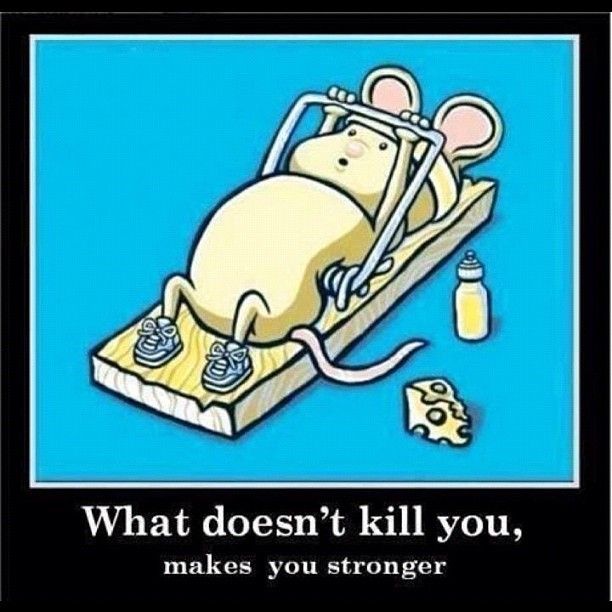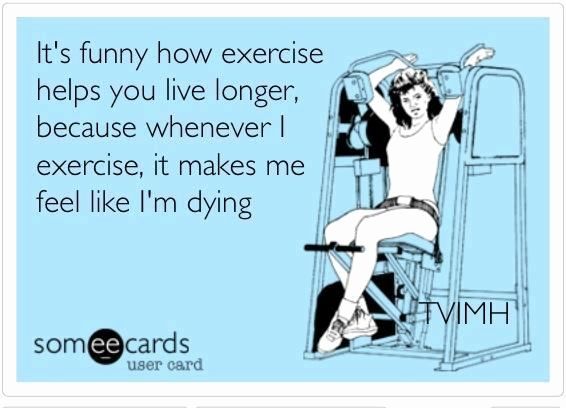Exercise and diabetes
How many times have you thought that you really need to make a plan and start working out seriously and consistently? Does this seem familiar?

Fret not, you are not alone. Procrastination is an art that is practiced by people across the world, irrespective of colour, creed, caste, medical conditions...you get the picture, don't you? I even sprinkled a little bit of it into writing my blog, after all what is life without some well earned stress and the dark clouds of looming deadlines?
We all have at least a vague idea that exercise is good for us. What is missing then? Why are we not exercising like we should? It is not like we needed any more motivation to work out (motivation is available by the quintals on our Instagram feeds, the Bikram Yoga YouTube channel you just subscribed to and hey, even our very own Facebook group!) but here is a friendly and precise reminder on why exercise is the best for anyone, but more so for us :

1. Helps stay fit and manage weight
In the modern world, a lot of us have sedentary lifestyles and the combination of unhealthy foods and the lack of exercise is brewing the perfect storm. A big chunk of the population are already overweight or even obese. While earlier T1 and T2 were two distinctly different diabetes disorders, now things have changed. With the increase in body weight and insulin resistance, these days Double Diabetes is a raging epidemic that T1s are at a risk for. Exercise is an important key to weight management and it helps tone and sculpt your muscles as well.
2.Makes us happier
When we exercise, the body releases chemicals called endorphins that are responsible for the legendary 'exercise high' (runner's high or post workout high) which is the feeling of being on top of the world. Usually, people with chronic health problems are three times more likely to develop depression than people without it. Exercise is a feel good factor - it eliminates stress, makes us sleep better and boosts self confidence. Read more about acknowledging the importance of mental health in T1D management here.

Exercise is a potent anti depressant. And it is free!
3.Prevents lifestyle diseases
Frequent and regular exercise boosts the immune system and is known to prevent or delay the onset of a host of diseases such as type 2 diabetes, hypertension, heart disease, stroke, dementia and Alzheimer's. Exercise slows down the process of ageing and undoubtedly improves general well being.

Remember, exercise is a celebration of what your body can do, not a punishment for what you ate
4.It is fun
What can be more fun that getting together with friends and playing volleyball on the beach or just plugging in your ear phones and heading out for a jog? Exercise can be a social activity and a way to catch up with others who have the same exercise goals as you or it could also be about giving yourself some much needed 'me-time' and disconnecting with the rest of the world for a while. It gives you a chance to relax, enjoy the outdoors and feel good about yourself.

5.Improves insulin sensitivity
Exercise is one the best ways to combat insulin resistance and improve insulin sensitivity. If I don't exercise for over 3-4 days, my insulin sensitivity takes a hit, however little. When I do exercise regularly, I definitely need lesser insulin.
Now you know exactly why exercise is a good thing and there's oodles of inspiration, so what stops you from heading out of the door? To rephrase a popular brand tag line
Just do it. Then do it again and again and again..
And if that is not motivation enough..

So is that it? Are we done and good to go? Of course not. Type 1 diabetes adds a nice creamy layer of sweet complexity sprinkled with a healthy dose of unpredictability to a lot of things, exercise included. If you have not realized already, blood sugars react differently to different types of exercise. Wait, are there different types of exercise?
Aerobic Exercise
What is it? Usually performed for longer periods of time, aerobic exercises are usually low to moderate intensity (steady state cardio) and they build endurance.
What does it include? Walking, running, jogging, skipping, cycling, Zumba, aerobics, elliptical
Effect on BG Aerobic exercises drop blood sugars generally
Tip Always carry your hypo stash in your pockets, fanny pack or vest to keep yourself prepared. Read our guide for new runners here.





Anaerobic Exercise
What is it? Usually performed for shorter periods of time, anaerobic exercises are more intense, they kick start your metabolism and keep it activated longer, increase VO2 Max and build muscle.
What does it include? Weight lifting, HIIT, sprinting, power lifting, resistance training, explosive jumps, CrossFit, most forms of martial arts.

Effect on BG Anaerobic exercises spike blood sugars
Tip Make a log and study the patterns of your blood sugars and do not be afraid to take a shot before or during a workout to arrest the sudden spike. I know it might seem counter intuitive but trust your research and reasoning. It can get very frustrating if you exercise and still spike. I take a shot midway through my MMA (Mixed Martial Arts) session at the 30 minute mark and still manage to have flat lines most days! It is not easy and it is not often that you succeed, but it is absolutely worth it.


Other factors
- A lot of exercises can be a mix of aerobic and anaerobic, such as football, where there are short bursts of energy as well as need for prolonged endurance. One needs to be careful while bolusing during such types of exercises to avoid hypos.
- Especially when doing a new form of exercise, test BG pre, post and during workout. There is NO way out, except testing repeatedly. Use a CGM or FGM if you have access to one.
- Be aware that delayed or nocturnal hypos can occur. Do a 3AM test on active days.
- Do not exercise if your sugars are high, over 250 mg/dl. Take a correction dose, wait till you are back to normal range and then resume exercise to avoid DKA.
- Be very careful with any active insulin before starting with exercise. The drop in BG can be harder and faster than normal when exercise is added to the mix, so be wary. However, in case of exercises such as swimming (especially for those on the pump), you could have a small snack + bolus before getting in the pool.
- Consider tweaking basal on very active days (some people even have different basal profiles for active and non active days)
- Adrenalin and stress can increase BG. If your T1 child is participating in a competition, or you are about to jump into the boxing ring you could definitely expect to see spikes.
Happy working out!

SUPPORT BLUE CIRCLE DIABETES FOUNDATION
We need your help and support to continue to grow, expand and touch the lives of countless people in the diabetic community. Every little bit helps us in sustaining this endeavour.
Click here to donate

